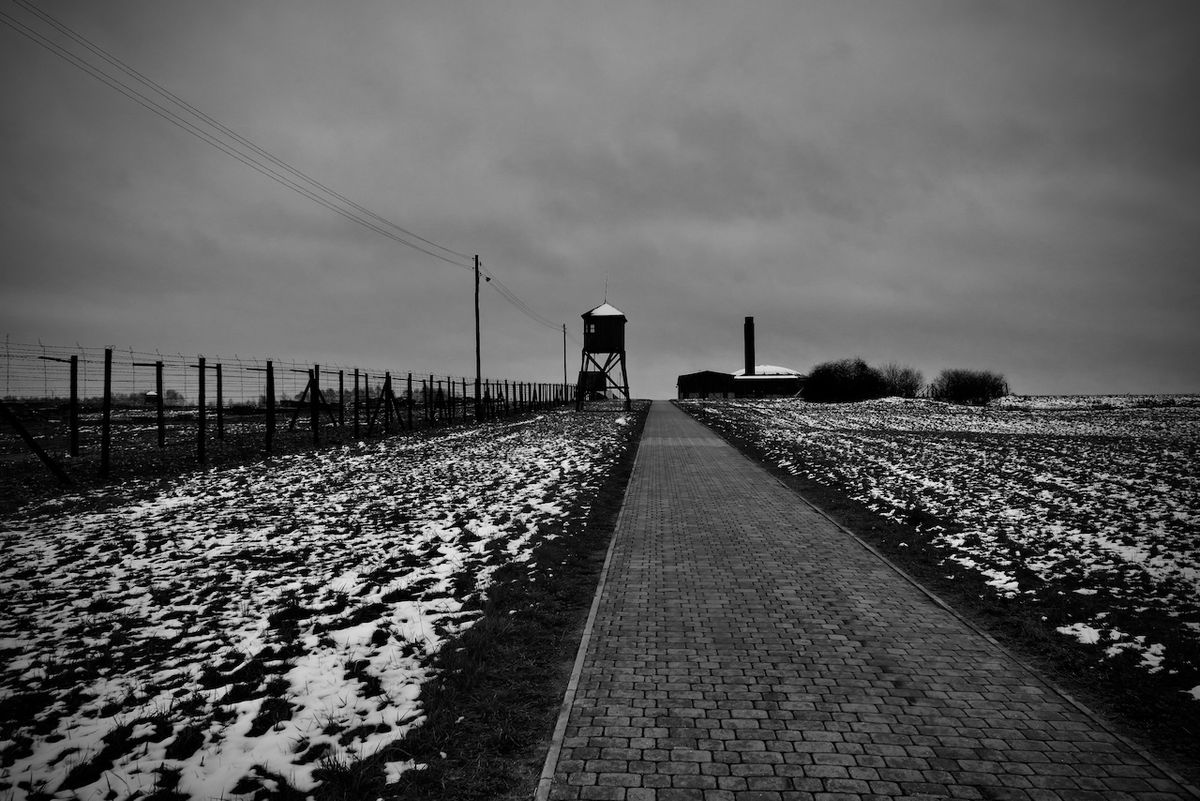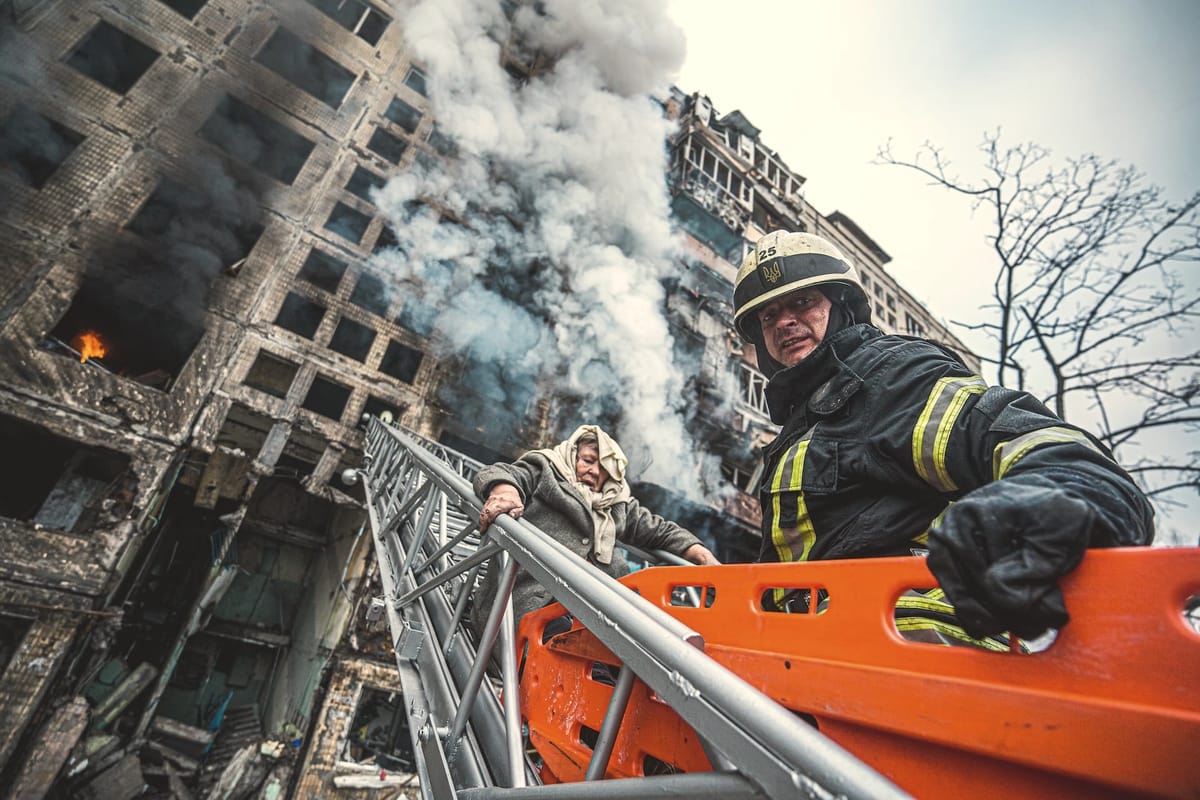It doesn't take a rocket scientist to know that I spend an inordinate amount of time researching and visiting holocaust sites. My bad. You're welcome.
In December I revisited the camp memorials at Sobibór, Bełżec and Majdanek. I also had a very disconcerting time in Josefów, that I wrote about on this blog. Whilst at Sobibór I got talking to the lovely Weronika about the new look of the memorial and whether or not it successfully avoided the architectural trope known as the "architecture of terror".
Like you do.
I realised then and there that I didn't understand this concept in sufficient detail, and set out to find out more, so that I could articulate myself more confidently.
First things first... the concept of "architecture of terror" refers to "structures and spaces that invoke feelings of fear, oppression and despair." It really emerged in postmodern architectural discourse as scholars analysed and critiqued totalitarian regimes' use of architecture as an instrument of terror, specifically in relation to the Nazi concentration camps of World War II.
In recent years, it turns out that there has been significant debate around commemoration and memorialisation of the architecture of terror, especially as new memorials are built on concentration camp sites across Europe. Two prominent examples are the memorials I mentioned at the start, unveiled in the past decade at the sites of the Bełżec and Sobibór Nazi extermination camps in Poland.
My question is, how have postmodernist ideas influenced the design and intent of these two memorials?
Postmodernism brings a new perspective to viewing these sites and their architectural legacy. In turn, it recognises the subjective, multi-faceted ways that individuals experience and assign meaning to buildings and spaces. As well, I think you could safely say that postmodernism complicates traditional hero-victim narratives which certainly dominated earlier memorials.
So, how have themes of absence, memory, experience and emotion in postmodern thought shaped these contemporary memorial landscapes? Does it help us avoid simplistic judgments about the perpetration of violence while allowing space for multiple perspectives and interpretations to emerge?
I guess ultimately I want to establish whether postmodernism provides insight into how memorial architecture continues to grapple with representing the complex truth of historical trauma.
Pretty straight forward, right? I'm easily pleased.
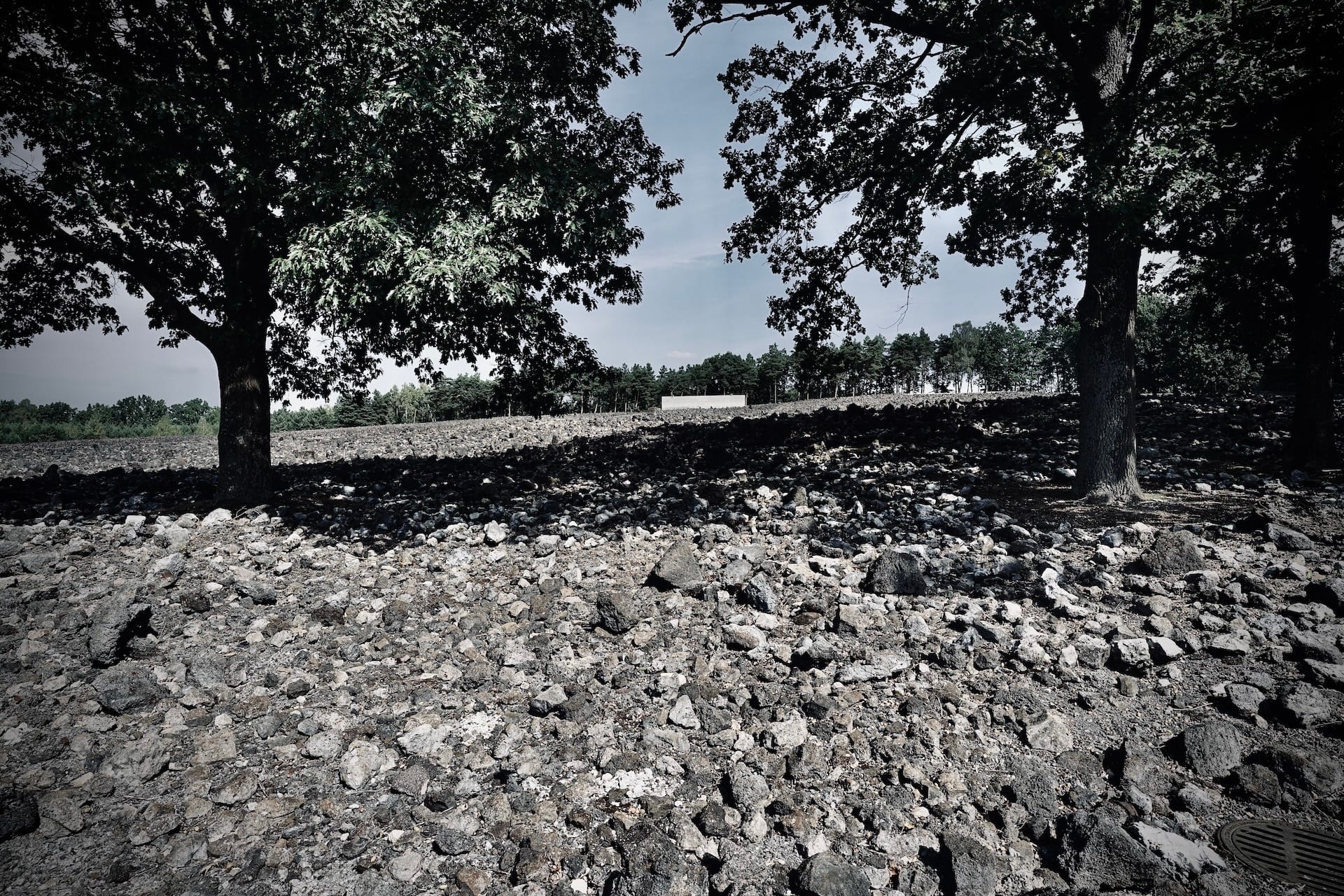
Postmodernism and the “Architecture of Terror”
Before looking at the two actual memorials in a bit more detail, allow me to outline the key tenets of postmodernism and its implications for the architectural concept of "spaces of terror."
A brief history lesson for some context: Postmodernism arose after modernism as a complex cultural development across philosophy, art, architecture, and critical theory from the late 20th century. It essentially introduced radical skepticism about established assumptions, norms and grand narratives in society.
I wrote a thing about postmodernism and the war in Ukraine here.
Architecturally, postmodern buildings adopted eclectic, complex styles that attempted to subvert the more rigid modernist formalism. They used symbolism and references that played with viewers’ perceptions and challenged totalitarian control over form and meaning.
Philosophically at least, postmodernism questioned modernist faith in human progress through reason, suggesting history and truth are subjective. (I mean, they are, aren't they?) It also recognised human creativity and interpretation as shaping reality as much as observable facts. (It's not what you see, it's how you see it... that's semiotics, I wrote about that too, here.)
Critically in this context, postmodernism contested the modernist dichotomy of civilisation versus barbarity. Twentieth century events like the Holocaust convinced thinkers that rational, advanced societies could propagate horrific violence.
In essence, that the civilised/barbaric binary was simplistic and mere "moral avoidance." I think it is this revelation that most profoundly impacts postmodern memorialisation of spaces like concentration/extermination camps.
The earlier architecture of some of the Nazi camps very much emphasised their rational planning as embodying the "paradoxes of modernity".
Building plans like those of Auschwitz seemed perfectly orderly on paper - clean architectural drawings that hide their actual malevolent function. In this example rationality facilitated efficiency for mass killing.
Postmodern interpretations, however, shifts emphasis to human experiences within the spaces. What did the architecture actually feel like to victims and perpetrators residing there for months or years? This concept reflects postmodernism’s elevation of individual meaning over abstract theory.
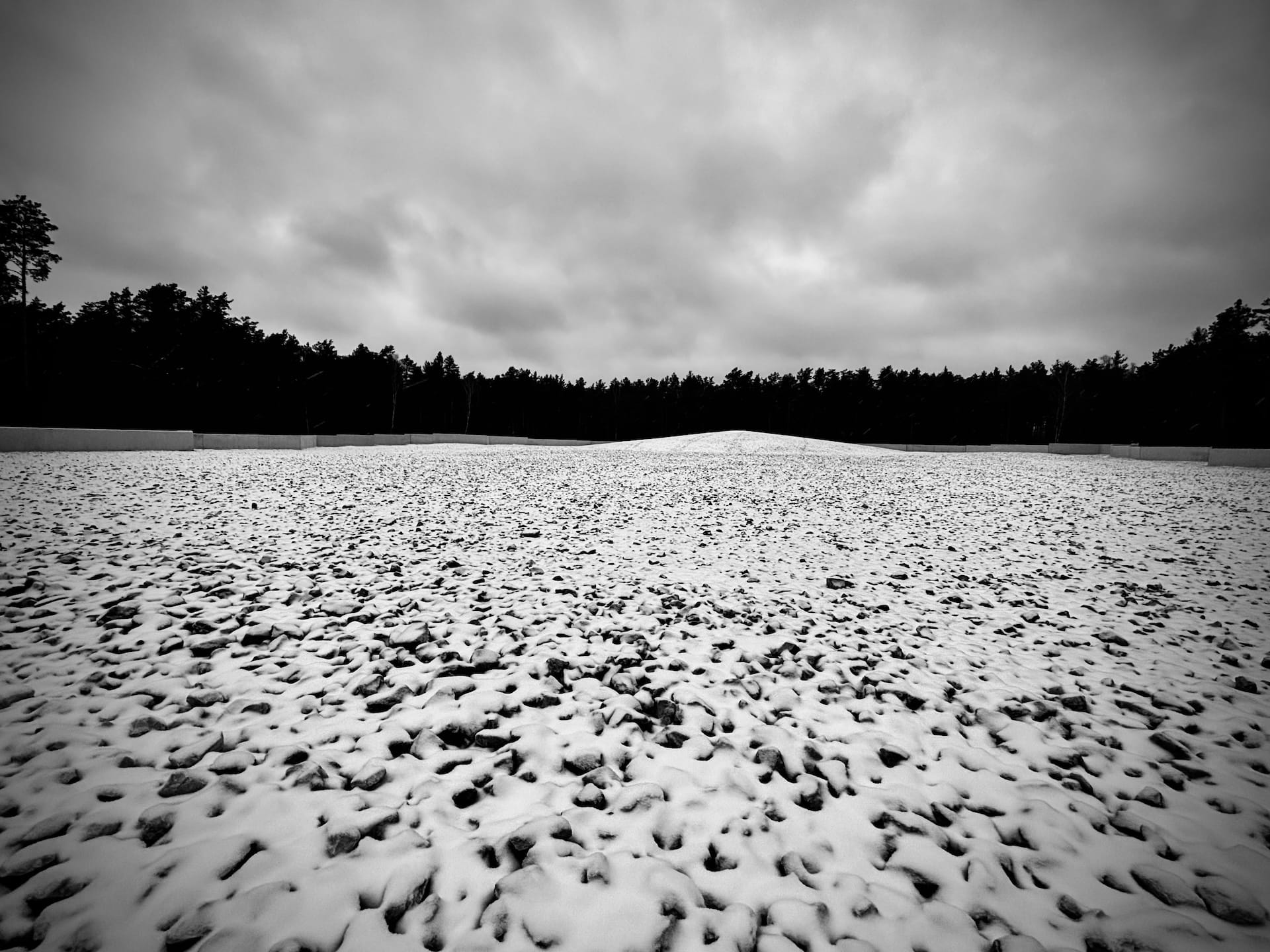
Let's go back a bit, shall we?
The dominant early framework for understanding camp architecture was through memory. The actual built structures served as physical vessels containing evidence of atrocious crimes that (we would broadly agree) should never happen again.
However, it transpires that some critics have suggested this particular view sacrifices complex realities for easy emotional impact. A more consumerist approach to understanding history.
As a school of thought, postmodernism recognises that diverse individual backgrounds shape perception differently - so there simply cannot be one universal "memorial language".
Postmodern influences also highlight the ambiguity that resides within spaces of terror. Architecture not only embodies traumatic memory but still-present absence. Camp buildings no longer actively enact violence, yet violence’s effects continue rippling through communities. For victims’ families, the empty barracks persistently represent all that was lost there. Meanwhile the spaces’ dual role in genocide and as sites of current memory must raise ethical dilemmas for designers and visitors alike that defy simplistic messaging.
Two prominent theorists, James Young and Heiner Müller, both directly engaged postmodern perspectives in their works on holocaust memorial sites. Young critiqued the tendency to see camps as cemeteries, conveying singular meanings of past death. Rather, following postmodernism’s moral relativism, he viewed them as dynamic arenas for "negotiating history" between groups with competing memories and agendas. Müller conceived seemingly contradictory spaces that layered visible absence and invisible memory.
I think both of these are relevant, but the latter, for me, exemplifies the ambivalence present in postmodern spaces between past and present, memory and meaning. This is classically seen at play today at Sobibór.
So, if nothing else, postmodernism introduced new lenses for interpreting the "architecture of terror" after modernity’s rupturing of civilisational progress.
Let's have a look at how this postmodern framework plays out in recent memorial redesigns - the notorious extermination camps, Sobibór and Bełżec.
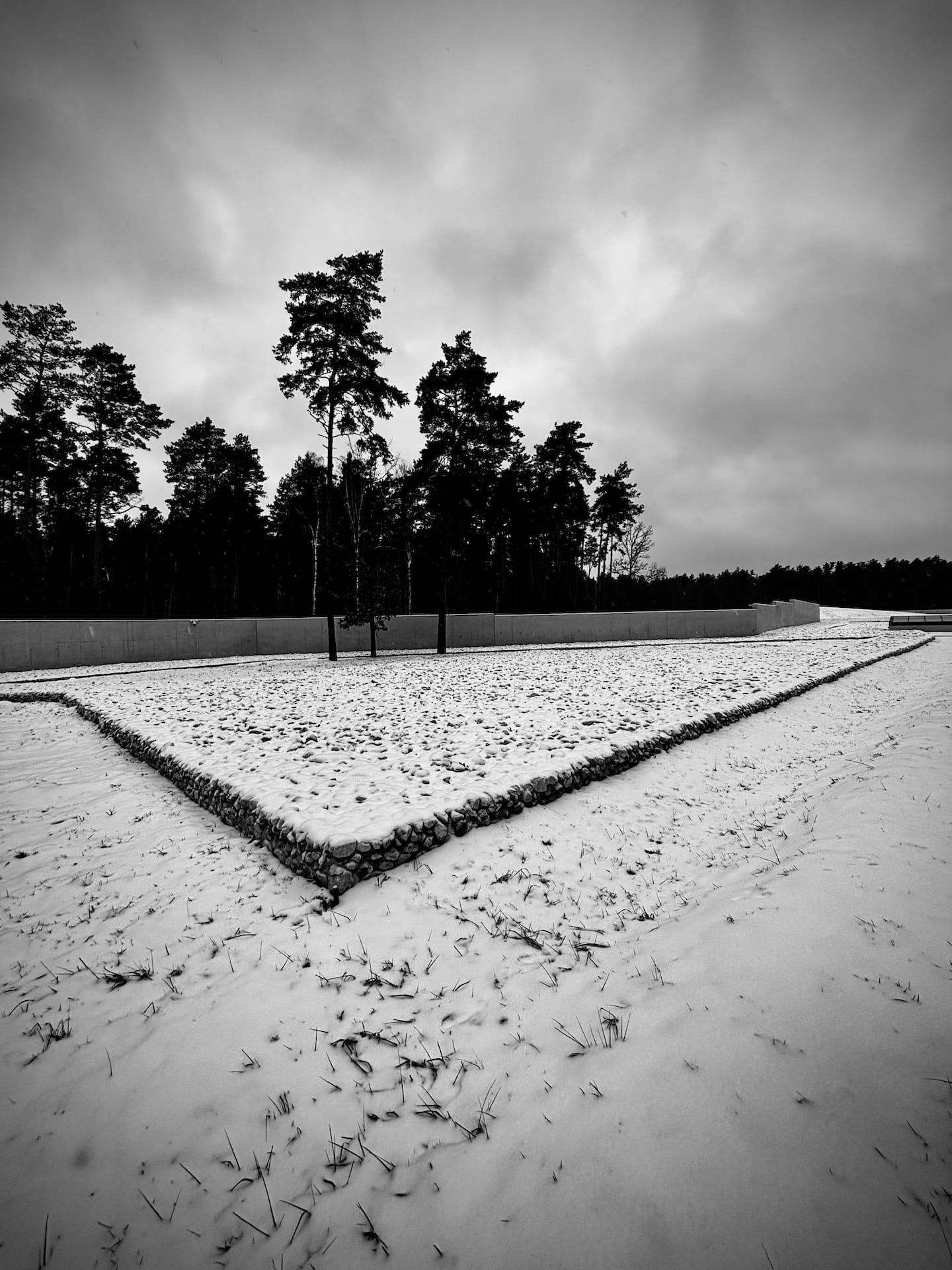
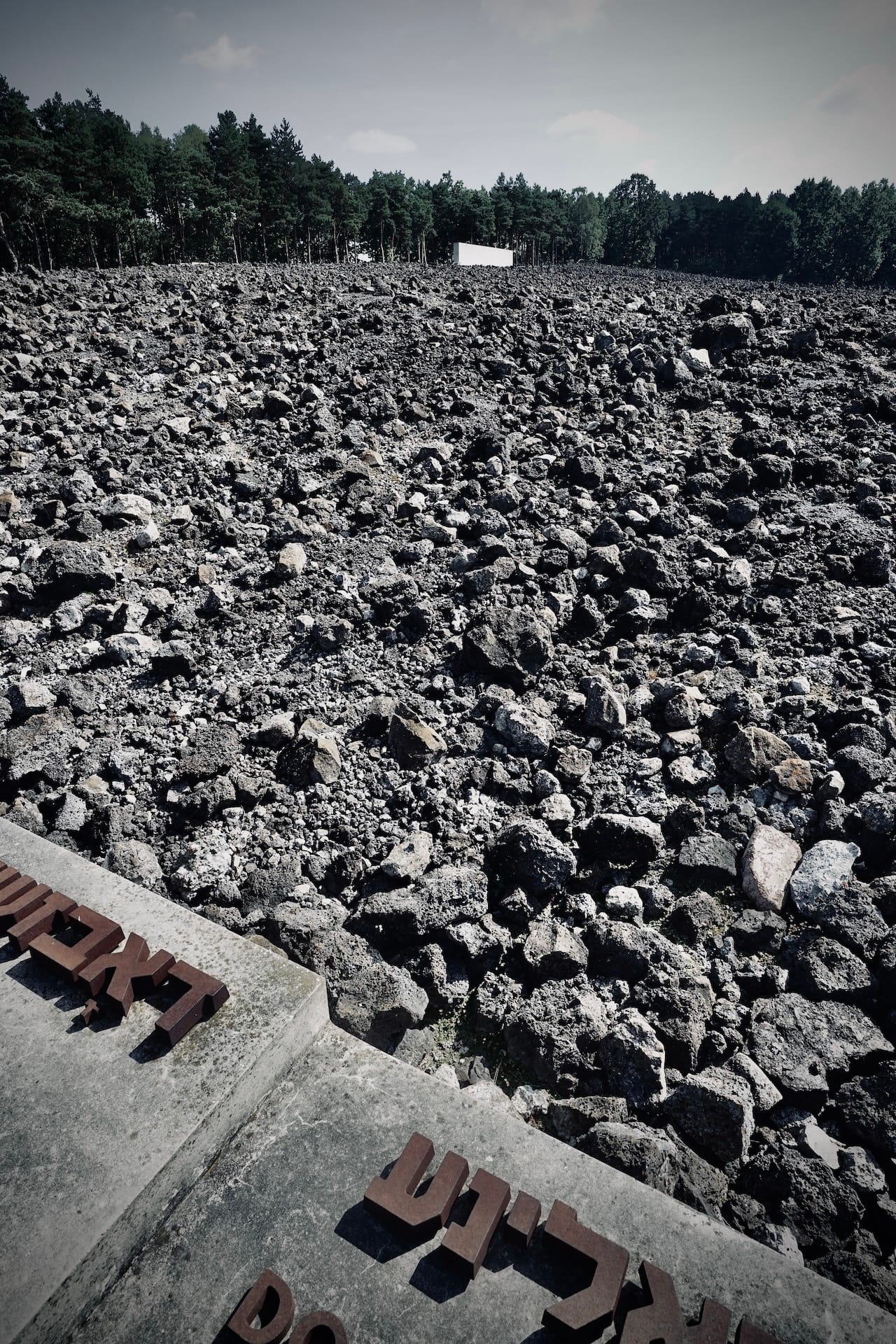
(L) Sobibór & (R) Bełżec
The Sobibór & Bełżec Extermination Camps.
The Nazi camps Sobibór and Bełżec were constructed in occupied Poland directly for the purpose of mass murder. End of.
Along with the equally notorious Treblinka they utilised gas chambers to kill Jews and Roma peoples as part of the Holocaust’s industrialised Final Solution. In their short operation from 1942-1943, the relatively small camps were sites of extreme, hitherto unknown brutality
Their isolated forest locations were chosen to disguise their genocidal activities. Deception defined the visitor experience. Greetings, reception buildings and gardens masked the instant processes separating victims between work capacitation, disrobing/haircutting rooms and gas chambers.
Efficiency was aided by rail integration - long platforms unloaded prisoners directly into killing zones. By war’s end over 250,000 were killed in Sobibór and 500,000 in Bełżec - the vast majority Jews.
The extermination infrastructure was dismantled and camps abandoned by Nazis hoping to hide evidence. In the post-war period the razed camp grounds became overgrown rural fields with fragmented ruins. Occasional memorials were erected on both sites, but many decades passed before attempts at any more meaningful, complex redevelopment.
As with most Holocaust sites, early designations emphasised the locations as cemeteries and symbolic tombs rather than dynamic places affording the opportunity to interpret a complex history. (It's worth pointing out that the long delayed reclamation likely reflected Communist-era Poland’s complicated relationship to its Jewish minority. But that's a different story.)
More recently however, renewed attention has returned to Sobibór and Bełżec as important remnants of Holocaust memory. New memorials gazing through postmodern lenses have aimed to respectfully acknowledge these camps’ overwhelming trauma and absence.
Let's take a look at the key features of both, and how they conform to, or eschew the concepts I've outlined above.
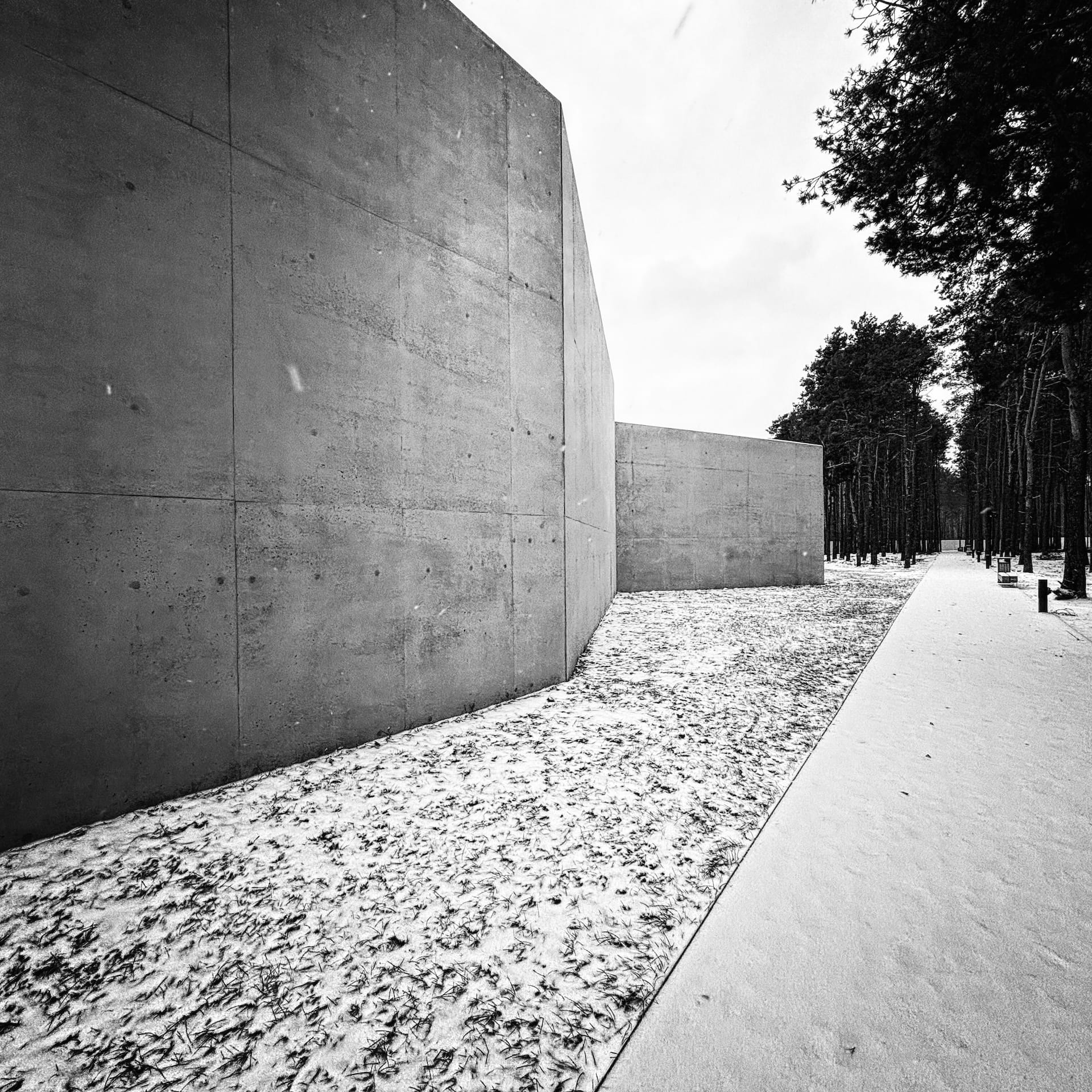
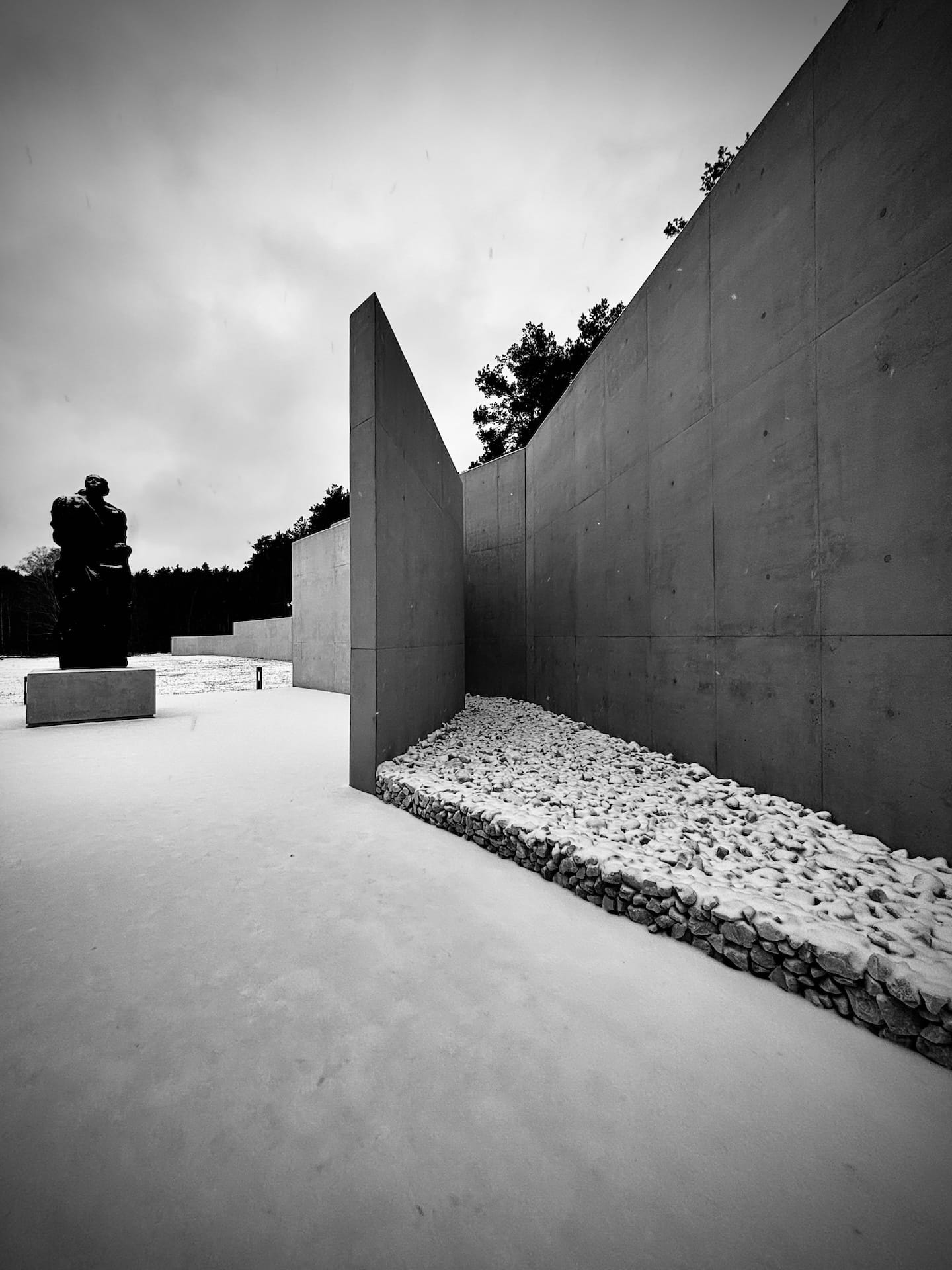
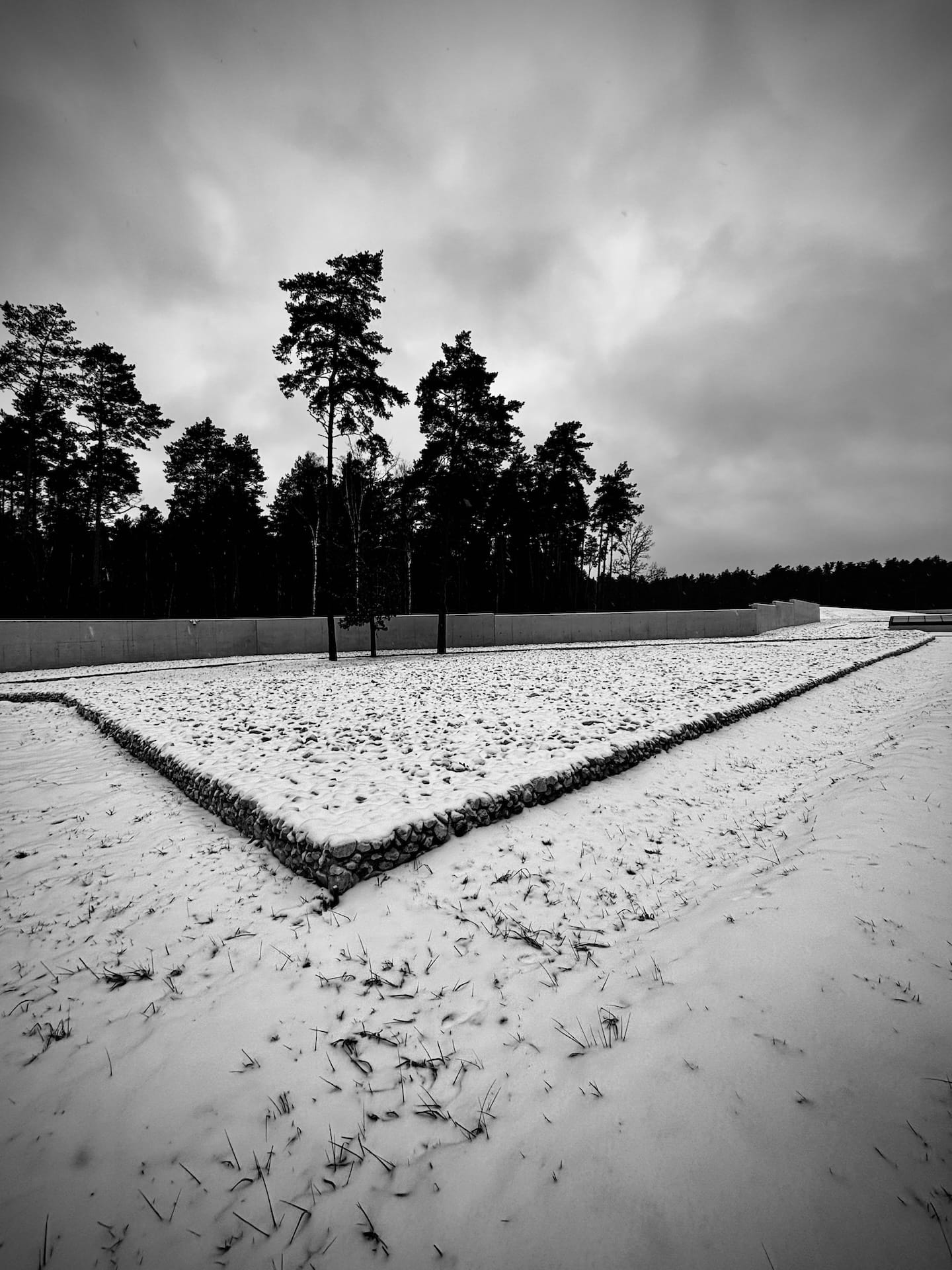
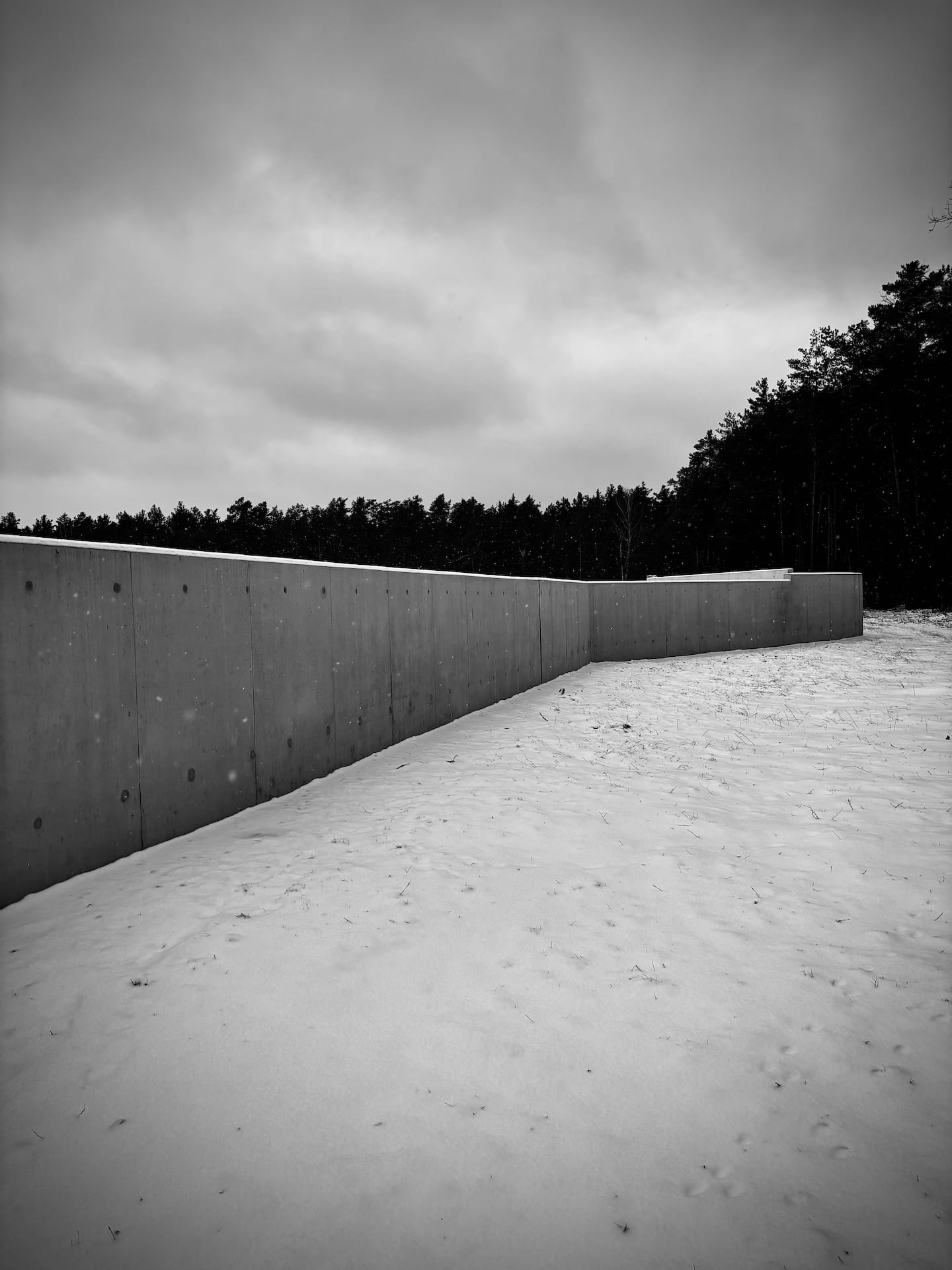
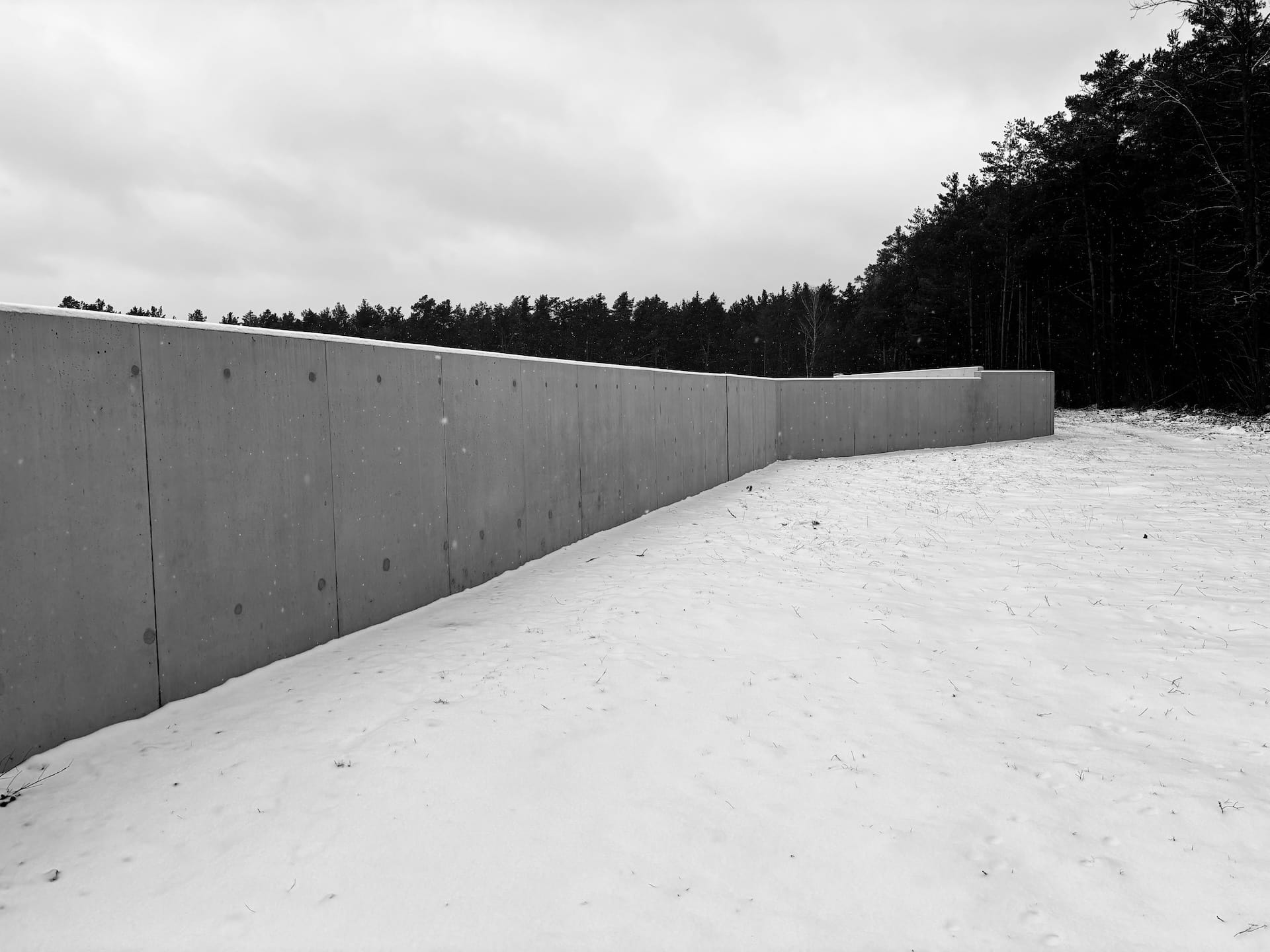
Sobibór Memorial; Poland.
Postmodern themes at the Sobibór Memorial.
The memorial at Sobibór contains starkly few original artefacts, and it's architecture instead guides visitors along interpretative paths integrating monuments and symbolic design elements across remaining camp foundations.
It's postmodern approach focuses less on evidence (what physically happened there) but rather how to invoke memory’s persistence across decades. The new symbolic structures foster this process, triggering imaginings and connections with enough detail to orient without overwhelming.
Visitors mentally construct camp realities using the stylised evidence unearthed by archeologists over the years. Attention is drawn to imposing and unsettling white marble walls and pathways that seems to pull one forward through the place.
To my mind, a core postmodern theme evident at Sobibór is the way it provides dynamic places within the memorial, holding different meanings for differently situated people rather than static stores of death.
The memorial expresses this though diverse zones catering to varying motivations; separate spaces serve mourning, learning, commemorating and reconciling without expectation of single reactions. The memorial path accesses personal grief, the museum educates through facts and photos, and visitors ultimately navigate between zones following unique trajectories negotiating personal meanings.
Unlike early functionalist memorials, postmodern Sobibór consciously deploys architecture to generate effective emotional responses. Narratives operate through a sense of motion, not just intellect. By directly triggering uneasy emotions through space rather than descriptions, Sobibór penetrates rational detachment.
Visitors viscerally access the atmosphere within the camp as an imaginative gateway to long disappeared experiences.
Sobibór's memorial leverages the altered camp landscape to stimulate reconciliation with loss and absence. Space and fragments suggestively fill gaps eroded by traumatic history and time.
It re-establishes Sobibór as an evolving locus where reclamation of identity continues.
If Sobibór’s memorial grounds rely largely on symbolic design interventions with scattered original remnants, Bełżec's Memorial represents an unusually ambitious archaeology exposing the subsurface camp foundations as key artefacts. Buildings housing exhibitions and archives float eerily above a vast concrete sarcophagus: architecture peeling back earth to confront absence.
Shifting vistas play with meanings of positive and negative space. Massive concrete volumes juxtapose and invert to frame emptiness, guiding visitors on disorienting journeys combining perspectives of above/below, presence/absence, visible surfaces/invisible interiors.
That said, these interpretive themes also echo Sobibórs' focus on subjectively sensed loss and erasure.
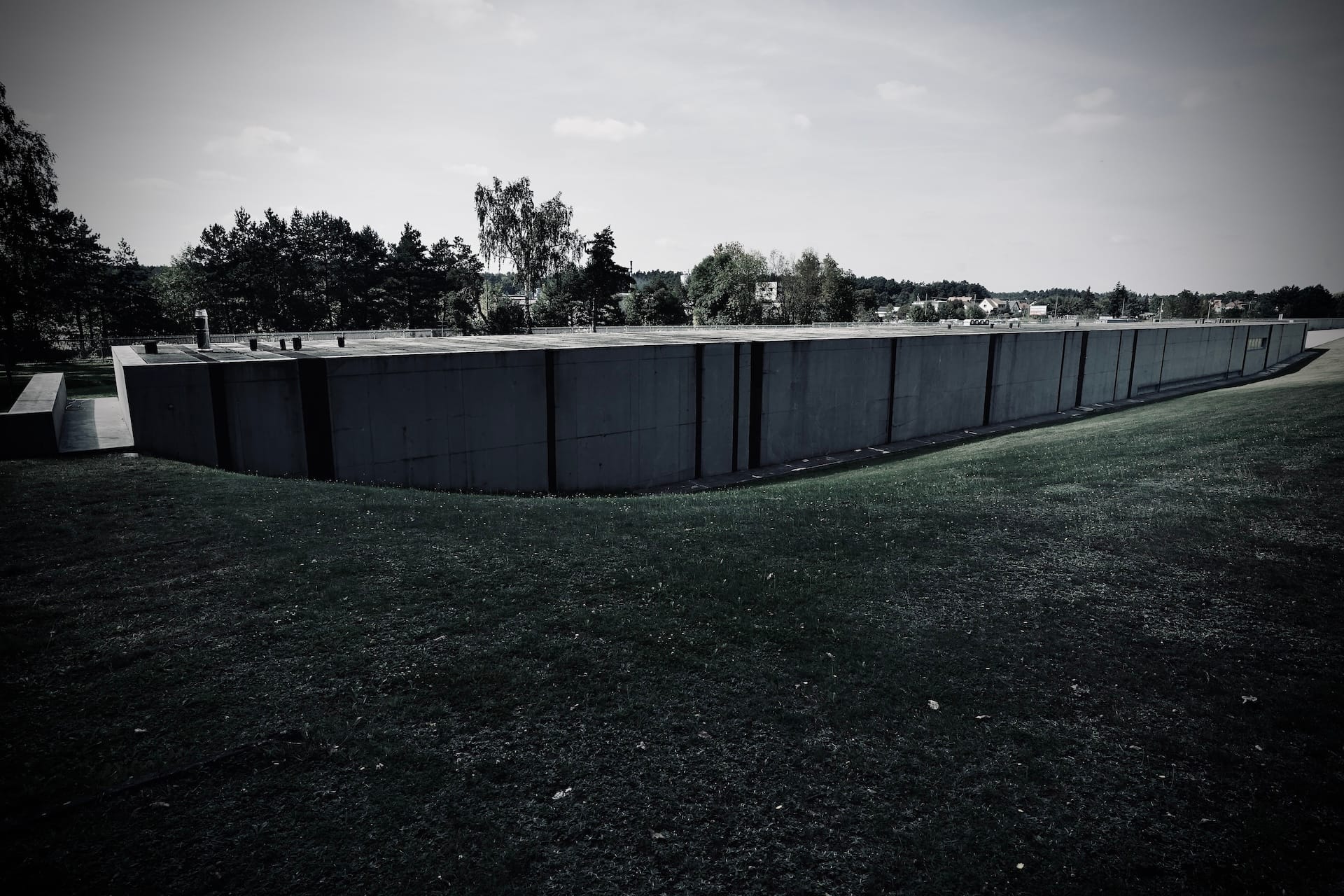
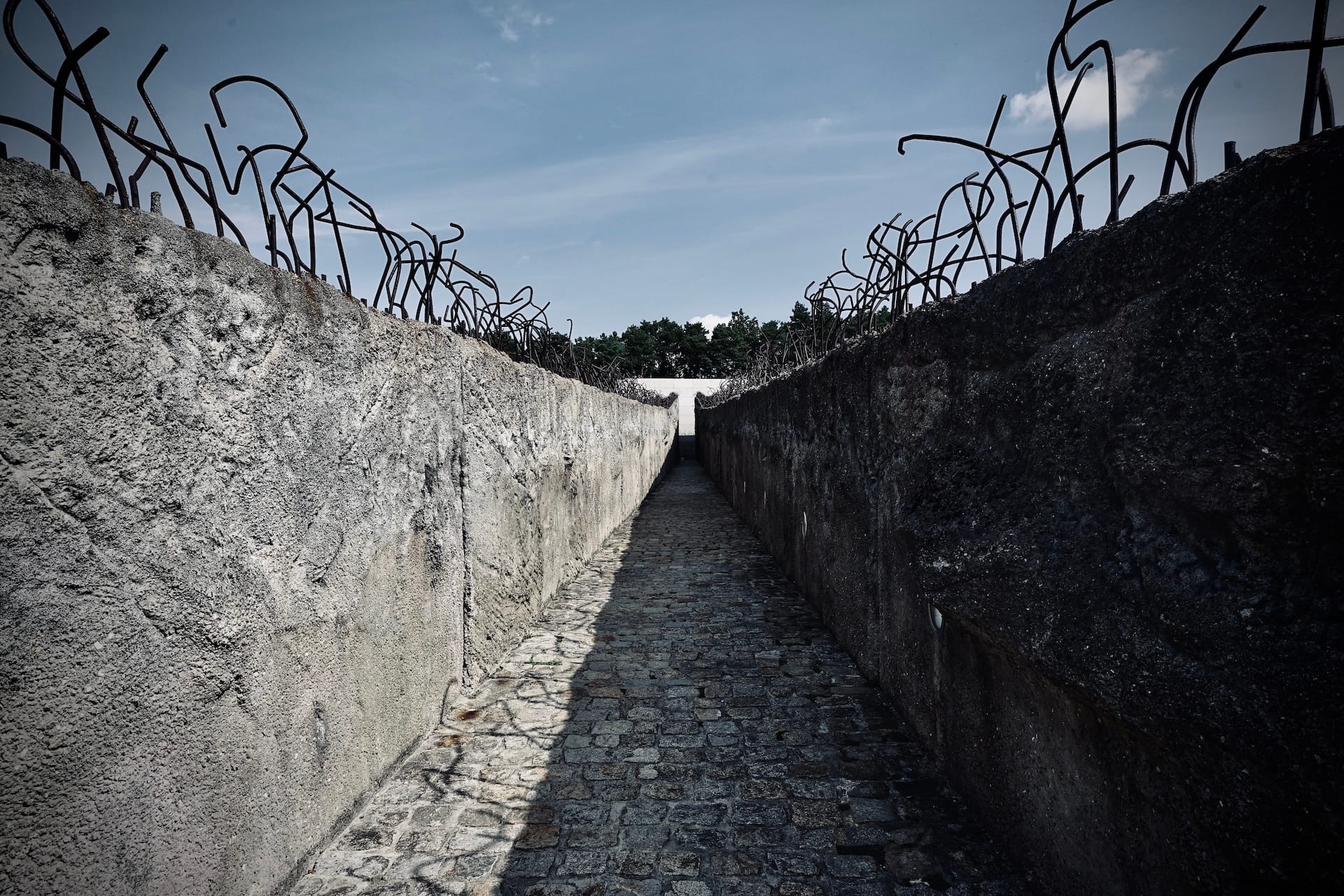
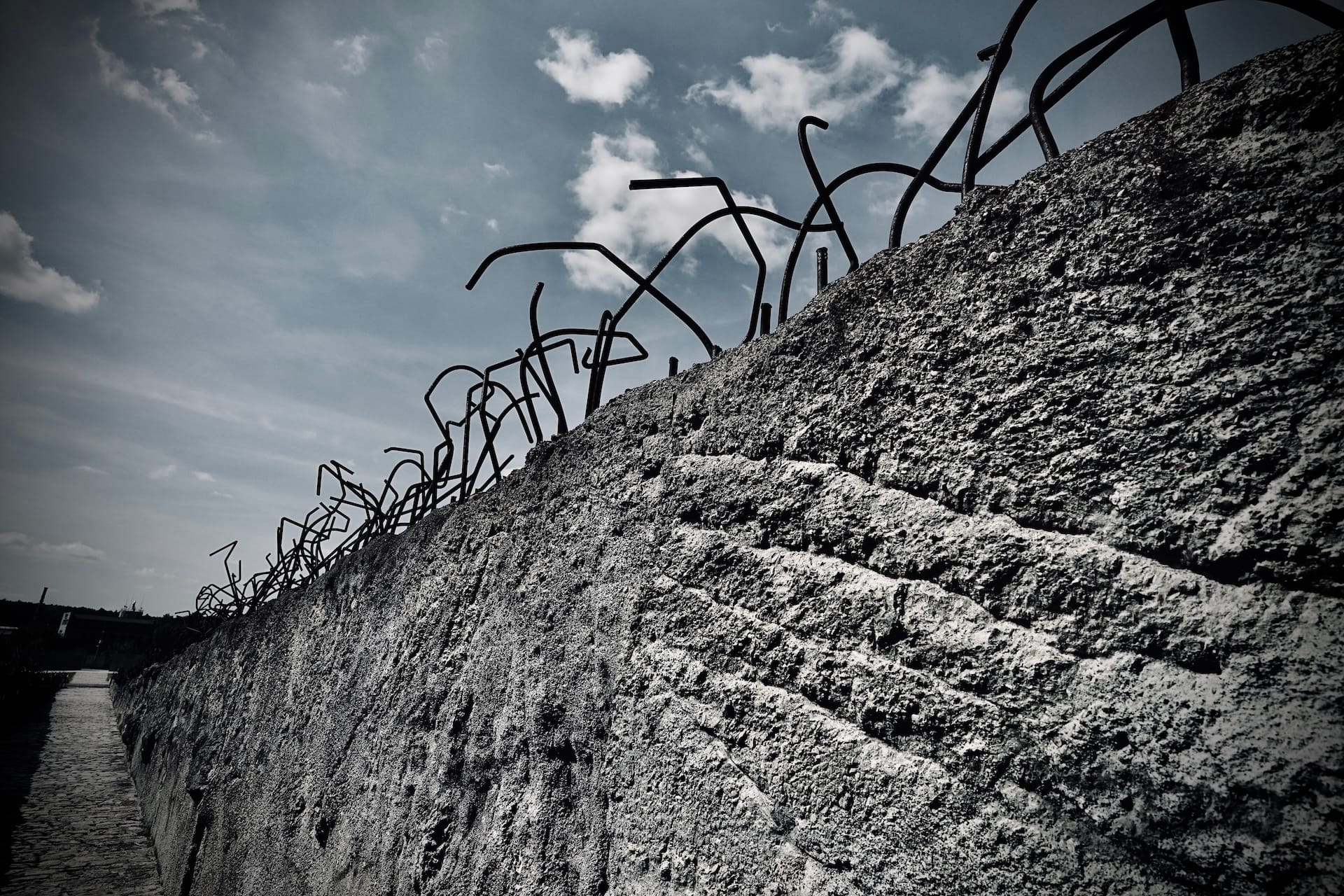
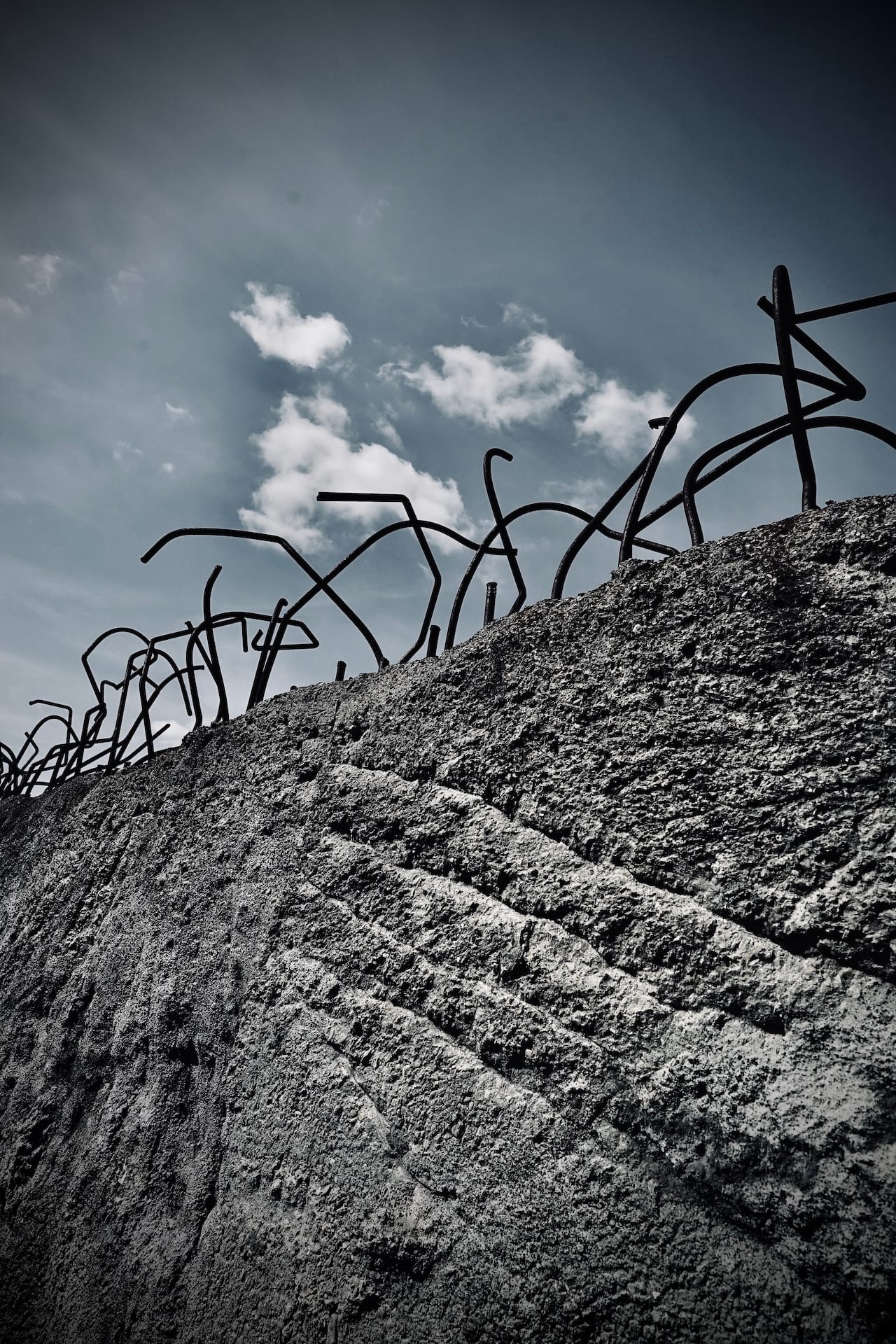
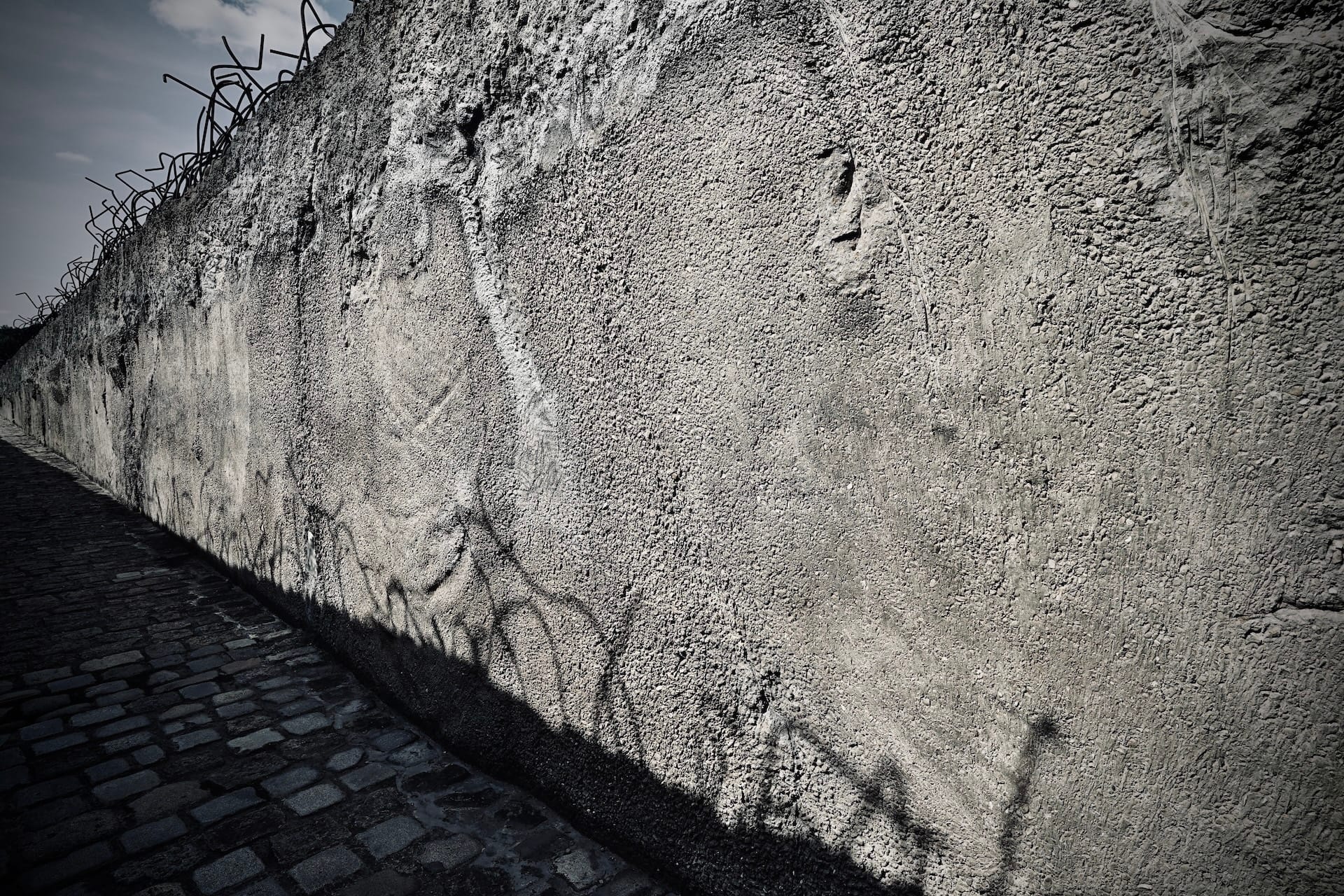
Bełżec Memorial; Poland.
Postmodern themes at the Bełżec Memorial.
Bełżec’s subterranean sarcophagus cuts an incongruous gash within bucolic farmland, nearly invisible until approached. Monumental panels of polished concrete define the edges and sunken depths of this “presence of an absence”. They delineate the vast scale of removed history hinting at what once filled this now hollowed terrain.
Negative space becomes subject, surface articulations of the missing: concrete textures evoke eroded earthen archaeology, shadowed geometric hollows suggest human origins. Forms usually ignored as background themselves memorialise the colossal loss of life.
The entire site plays with elevational shifts dividing present from past, body from context, grounded stability from vertiginous uncertainty.
Gradually descending walkways thread through concrete cliffs, we lose our footing and float uncertainly through underworld ruins – the material density of architecture fragments into intangible memory. Conversely, glimpses skyward frame visitors small within the gaping concrete pit - swallowing absence surrounds. Past and present collapse: we inhabit both an everyday Polish field yet metaphorically dig into consciousness layers that can scarcely be contained.
Bełżec translates the disorientation central to camp experiences into visitors’ tense navigation.
Enclosures split sight-lines, spiral paths impede progress, the ground drops away without warning. Movement frustrates attempts to grasp space whole. Yet punctuating blocked vision and dizzying motion are unexpected moments of prospect that temporarily orient: here finally contexts reveal themselves.
Symbolic negative spaces (sculptures, wall gaps) come into focus like flashbulb memory images. Stillness lets meanings emerge from the turbulent architectural flow. This alternating current emotionally resonates with victims’ fracturing worldviews amid totalitarian architectures.
Through these unsettling spatial strategies, Bełżec’s submerged volumes give form to postmodern ambiguity around unrepresentable trauma. Emptied, abstracted structures invoke presences that overwhelm fixable meaning. By incorporating absence and uncertainty into the memorial’s very concrete, architecture forces sober reckoning with the persistent gaps eroded by genocide.
The postmodern turn in interpreting the architecture of terror – embodied by these recent Polish memorials – maintains necessary productively unsettling tensions.
Sobibór’s reconstitution through memory, multi-faceted narrative and affect contrasts Bełżec’s dizzying ambivalence between absence and presence.
What does all this mean?
I think that both memorials reject false redemptions of history and distance. Instead they situate visitors in direct contact with those terrifying ruptures when rational order, bodily autonomy and identity collapsed for too many. Keenly felt relationships emerge between now mostly invisible crimes and their persisting life-shaping impacts.
Alas, postmodernism brings no easy catharsis to the emotional and ethical challenges raised by engagement with genocide memory. Perhaps more valuably however, its destabilising spatial strategies dispel complacency that such depravity lies safely behind glass.
By implicating ordinary visitors within disorienting flows between then and now, presence and absence, knowing and unknowability, these memorials ensure remembrance cannot remain more passive observation.
Negotiating fragmented, dynamic spaces, we grasp terror’s ghosts firsthand. Such visceral confrontation with architectural aftermath may inspire humble reconciliation and vigilance where narratives alone grow stale.
While respecting multiplicity, open questions remain regarding victims’ satisfaction, commodification, non-Jewish deaths and fierce political disputes over camp memory in national identity construction. Neither design perfectly resolves every tension. However in their sculpted uncertainties, textures of loss and flows between emotion and understanding, postmodern architecture returns successfully to animating human meanings at Holocaust sites rather than rigid material bounds.
Walls erode into restless community process, the journeying body awakens memory from ossified evidence. Space itself mourns and cautions through its ongoing, open-ended transformation.
Like that? See this:
